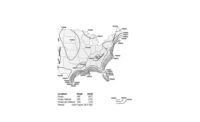The International Code Council's board of directors approved a controversial change to the development process for its model International Energy Conservation Code, basing it instead on the system used by the American National Standards Institute. For the first time, private-sector interests, not just government code officials, will have final voting privileges on changes to the model code.
The ICC's switch to the more streamlined standards process proved contentious. The proposed changeover drew 207 written comments to the ICC from government officials, industry representatives and trade and professional organizations, with 75% weighing in against change. The comments came from dozens of cities and states, the American Institute of Architects (AIA) and many of its chapters, the National Association of State Energy Officials, ASHRAE and DuPont Safety & Construction.
Homebuilders, energy interests and manufacturers back the new process. “The proposed framework…appears to provide a clear improvement for the energy code development process going forward,” says Chuck Fowke, chairman of the National Association of Home Builders (NAHB).
Following the ICC board’s March 3 decision to switch to the ANSI process, AIA staked out its opposition. “We are deeply disappointed to see the ICC move forward with this change, which we believe will present a step backward for climate action,” says Robert Ivy, AIA's CEO. “This heavily opposed decision stands only to serve select special interest groups and will no doubt erode progress toward the modern codes that are desperately needed to heal our planet.
"We hope the ICC board of directors will ensure transparency and fairness in the selection of this new committee and take its oversight responsibility seriously,” adds Ivy.
Under the previous system, while the full range of stakeholders participated in hearings and committees, only government officials were able to vote on final code changes. In the ICC’s own words, that left “the final determination of code provisions in the hands of public safety officials who, with no vested financial interest, can legitimately represent the public interest.”
A Marked Change
The new system represents a marked change. “Now final determination will be made by a small group of people, with governmental voters as a minority,” says Amy Boyce, associate director for codes and strategy at the Institute for Market Transformation. IMT is a nonprofit that works with owners and developers toward more energy-efficient buildings.
Though the exact size of the two new energy-code committees “has not been determined yet, each will likely be around 30 to 40 people,” says Jessica Chang, senior account representative with Coyne PR, ICC’s public relations firm.
The committees will have representatives from nine different “interest categories,” and government regulators will make up one third of the committee members. Committee membership will be determined through an open nominations process with no seats reserved for organizations. That is a change from the previous process, under which four of the 11 committee voting seats were given to people chosen by the NAHB.
“More stakeholders will be involved in the [new] standards process, but government regulators’ influence will be reduced,” says Jon Siu, who recently retired after many years as Seattle’s chief code official.




Post a comment to this article
Report Abusive Comment